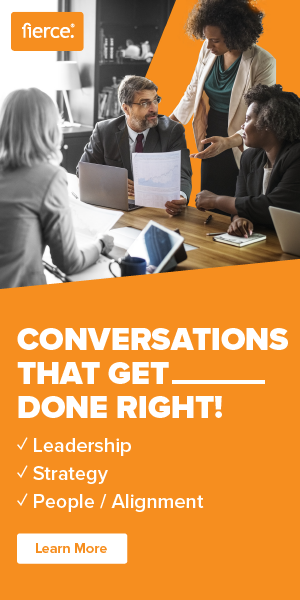
Imagine this: It’s the start of another year, and here you are, sketching out goals that feel more like wishful thinking than actionable plans. You know the drill – ambitious objectives, enthusiastic starts, but somewhere along the line, the momentum fizzles out. It’s frustrating, right? You’re craving a roadmap that actually leads somewhere, not just circles around the same old paths. This series of Planning Tips has been all about providing roadmaps. And this week’s tip is no different – empower your planning by crafting effective employee development plans. We’ve spent a lot of time discussing big picture strategies, but now it’s time to drill down to individual contributors to the organization.
You are about to be bombarded by acronyms – IDPs & PDPs. Don’t worry if these are new, we will explain how to apply these concepts for building a plan for employee growth.
Understanding the Importance of IDPs
Individual Development Plans (IDPs) are threads binding employee aspirations with company goals. Here’s what they can accomplish for annual planning and goal setting:
Clarity and Direction for Employees: IDPs are like personal compasses in the hands of employees. They offer a clear direction, transforming career aspirations from vague ideas into concrete paths. Imagine standing at a crossroads; an IDP is the signpost pointing you towards your desired destination.
Benefits for Managers: For managers, IDPs serve as a bridge to understanding their team’s career aspirations. It’s like having a map of each team member’s professional landscape, allowing managers to guide them effectively. This understanding fosters a supportive environment where employees feel their growth is genuinely backed by their leaders.
Company’s Investment in Employees: When a company implements IDPs, it’s making a statement: “We invest in our people.” This investment goes beyond mere words; it’s a tangible demonstration of commitment to employee growth. The result? Increased loyalty and productivity. Employees don’t just see themselves as workers; they feel like valued members of a larger mission.
Encouraging Career Goals and Organizational Alignment: IDPs are not just about individual growth; they’re about aligning this growth with team objectives and organizational goals. It’s a symbiotic relationship where personal achievements fuel organizational success, and vice versa. This alignment ensures employees stride towards their goals and contribute meaningfully to the company’s overarching objectives.
In essence, IDPs are more than plans; they’re catalysts for empowerment, engagement, and alignment within an organization. They’re about nurturing a culture where individual growth and organizational success are intertwined, each driving the other forward.
Step-by-Step Guide to Creating an IDP
Embarking on the journey of creating an Individual Development Plan (IDP) is transformative. To provide an example of how they are crafted, let’s walk through the Fierce process of building an IDP.
Self-Assessment: The first step is self-assessment, a crucial phase where employees reflect on their strengths, weaknesses, and career aspirations. At Fierce we use several assessment tools such as DISC and the Pulse App. Pulse revolutionizes the traditional approach by using biometric data, it customizes development plans with precision, offering insights beyond subjective self-evaluation. It’s like having a personal career coach who understands your unique professional DNA.
Setting Realistic, Measurable Goals: With insights from DISC and the Pulse App, setting goals becomes a focused exercise. Utilizing Fierce for Life’s resources and courses, employees can craft goals that are not just aspirational but also achievable and relevant. These goals are the stepping stones of the IDP, each carefully placed to ensure steady progress. It’s about turning ‘I wish’ into ‘I will.’
Alignment with Managers: The Pulse Dashboard plays a pivotal role in aligning employees’ development plans with managerial oversight. It provides managers with a comprehensive view of their team’s skills and growth areas, backed by data. This alignment is key; it guarantees the IDP is not just a personal document but a collaborative effort, aligning personal growth with organizational objectives.
Regular Check-Ins and Feedback: The journey of personal development is ongoing, and regular check-ins are its milestones. Fierce for Life’s engagement tools facilitate these check-ins, transforming the IDP into a living document, evolving with the employee’s progress. Feedback during these sessions is not just about course correction; it’s an opportunity for recognition and encouragement, reinforcing the journey towards personal and professional excellence.
Incorporating Fierce for Life’s tools into the IDP process transforms it from a static exercise into a dynamic, data-driven journey. It’s about harnessing technology to unlock human potential, aligning personal aspirations with the pulse of organizational growth.
Personal Development Plans: A Broader Perspective
Expanding to Personal Development Plans (PDPs), we enter a realm where professional growth intersects with personal enrichment. Let’s explore this broader perspective:
Key Aspects and Benefits: PDPs are comprehensive blueprints for personal and professional growth. They go beyond job-specific skills, embracing broader aspects of personal development. PDPs should be more than a checklist; they transform into a holistic growth experience. Imagine a tool that not only helps you excel in your career but also enriches your personal life, fostering skills like resilience, adaptability, and emotional intelligence.
Universal Application: The beauty of PDPs lies in their universal applicability. Whether you’re a CEO or a new recruit, personal growth is a continuous journey. At Fierce, we democratize this process, offering tools and resources catering to every level within an organization. It’s about creating a culture where growth is ingrained in the very fabric of the company.
Leadership Transparency: A key aspect of fostering a culture of growth is leadership transparency. When leaders openly engage with their own PDPs it sets a powerful example. It breaks down barriers, showing that growth is a shared journey, not a solitary pursuit. This transparency builds trust and encourages a more open, growth-oriented workplace.
Enhanced by Fierce for Life: Fierce for Life’s personalized marketing materials and implementation e-books further support this journey. They provide a framework for effectively communicating the value of PDPs and ensuring their successful integration into daily routines. It’s about equipping individuals with not just the vision but also the roadmap to personal and professional excellence.
PDPs are a commitment to nurturing a workforce that is not only skilled but also well-rounded, resilient, and adaptable – qualities that are invaluable in today’s ever-evolving world.
Navigating the Path to Empowerment
In the quiet moments of reflection, you might find yourself wondering if the effort to develop and implement these plans is truly worth it. Perhaps there’s a hint of doubt, a whisper questioning whether these strategies genuinely transform your organization. It’s natural to feel this way, especially when the stakes involve the growth of your team and the success of your business.
But here’s the thing – every great journey begins with a single, albeit uncertain, step. The path of employee development is more than a strategy; it’s a commitment to unlocking the latent potential within your team. It’s about fostering a culture where growth is not just encouraged but celebrated, where each individual’s aspirations are interwoven with the organization’s goals.
Imagine a workplace where every employee feels valued, understood, and equipped to reach new heights. Think of the ripple effect this has – increased engagement, innovation, and a palpable sense of unity. This isn’t just a distant dream; it’s a tangible reality within your grasp.
Embrace the power of IDPs and EDPs and remember, the benefits of the process extend far beyond the confines of annual reviews or performance metrics. You’re building a legacy of empowerment, resilience, and shared success.
The path to empowerment, both personal and professional, is laid out before you. The question isn’t whether you’re ready for this journey – it’s whether you’re ready to lead it.
And when you look back, you’ll see not just a trail of achievements but a legacy of growth and transformation.



